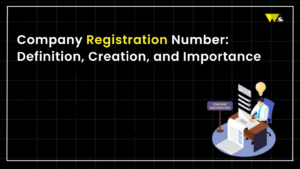It is compulsory for the employers to enrol their employees into the Employees’ State Insurance (ESI) scheme for health and social security in the country like India. After the completion of the enrolment process, the employers in turn have to go through the ESIC annual return filing procedure at regular intervals so as to record their contributions towards the coverage of the employees and maintaining compliances.
The Employees’ State Insurance Corporation (ESIC), under the Union Ministry of Labour and Employment, administers the Employees’ State Insurance (ESI) scheme which can be advocated as the best example of health and social insurance for the employees in India. In addition to making ESI registration compulsory as a legal requirement, all companies with ten or more employees also regard it as a pledge towards their employees’ health and wellbeing. By means of consistent contributions and careful submission of ESI returns, companies guarantee that their workers are shielded against unanticipated health and financial setbacks, strengthening the cornerstone of a safe and robust workplace.
What is ESIC?
- “Employees State Insurance” is what ESI stands for. Social Security is what every employee in a business receives.
- It is advisable for employees to enrol under the ESI scheme to be able to get financial and healthcare assistance in case of illness, childbirth, occupational injury, or other situations.
- The Employee’s State Insurance Act (1948) more often described as social risk insurance in broader terms.
- Additionally, workers and their immediate dependents are guaranteed reasonably acceptable medical care under the Act.
What Do You Mean by ESIC Return?
The ESI Return is a statutory requirement according to the scheme of Employees’ State Insurance (ESI). The ESI Corporation operates under the Ministry of Labour & Employment which provides the services availed under this scheme. The primary objective of this scheme is to safeguard the employees from any economic loss due to sickness, injury and/or any other health condition.
- Filing Frequency: In accordance with the financial half-year periods, ESI returns are filed semi-annually.
- Required Compliance: In order to stay in compliance with ESIC requirements, all entities that possess an ESI registration are required to file ESI returns within the designated timeframes.
Required Documents for ESIC Annual Return Filing
A number of documents need to be carefully kept up to date and submitted when filing Employees’ State Insurance (ESI) returns in order to guarantee compliance with the ESI program. These documents help ensure efficient processing of returns and demonstrate compliance with ESI rules.
- Employee attendance is tracked in an attendance log.
- A required form for ESI filing is Form 6.
- Thorough wages register that employees have received.
- Accident Report List of all incidents that take place at work.
- A log of all ESI inspections performed is called an inspection book.
- Documentation of monthly ESI contributions and filings is done through ESI Challans and Returns.
Procedure for Filing the ESIC Annual Return
Every ESI-registered business must file its half-yearly and annual returns. It is necessary to list every change made during the course of the year. They also have to submit the half-yearly ESI contribution, which needs to be paid between April 1 and September 30 & October 1 and March 31 to the nearest branch office or ESIC regional commissioner.
Within 42 days of the end of the half-year period, which falls on November 12 for the months of April through September and May 12 for the months of October through March, the ESI return must be filed.
Employee benefits are offered by the ESI program, which also boasts a nationwide network of hospitals and dispensaries for quick and effective medical care.
The steps to file the return of contribution via the Employee State Insurance corporation website are as follows:
- A 17-digit code is provided to the employer upon registration. This will be used as the employee’s user ID; the password and ID will be supplied to them separately.
- Next, choose the monthly donation area from the main page, then click on View RC.
- Following this, the screen will show all of the information on the employee’s paid contribution from the employer as well as the employee’s wages.
- If an employee has a contribution, make the short payment. Next, create further challans by using the alter challan option found under the monthly contribution section.
- The amount whose payment is to be made on the unpaid wages must be produced as a miscellaneous challan (not related to identifying).
- Then under the monthly contribution section under self-certification, kindly make sure the declaration is marked correctly and press the submit button. Before pressing the submit button, please upload your chartered accounting certificate if your company employs forty or more people.
- If an employer fails to make any payments for any of the two periods in which they are obligated to do so, they must physically deliver the contribution return to the relevant branch office or Employee State Insurance Regional Commissioner.
Punishment and Penalties
- Any individual who violates any provision of the Act shall be liable to imprisonment for a period which may extend to 2 years or to a fine which shall not exceed 5000 rupees.
- For the second or subsequent infringements of any provision of the act, one shall be subject to up to 5 years of imprisonment as well as a fine not exceeding band of 25,000 rupees.
Advantages of ESIC Annual Return Filing
Businesses enrolled in the Employees’ State Insurance program must file ESI returns. The following are the straightforward advantages:
- Abides by Legal Norms: This aids businesses in adhering to legal guidelines and avoiding penalties for contravening any regulation.
- Protects the Employees: It provides the employees with some monetary resources in case of ill health or pregnancy, work-related injury, or sickness.
- Health Services: It is quite advantageous when the employees can access free medical services for themselves and their dependents.
- Maintains Accurate Records: It assists companies in maintaining accurate records of the funds paid for employee insurance, which is helpful for audits and other verification processes.
- Money when Unemployed: As long as the returns are filed, the program can provide some financial assistance to an individual who loses their employment.
- Establishes Trust: Consistent filing demonstrates to staff members that the company is concerned about their welfare, which uplifts and encourages loyalty.
- Easier for Claims: Processing claims is made simpler when employee data is updated on a regular basis through filings.
- Displays Ethical Business Conduct: It’s an indication of a conscientious company, which might enhance the company’s reputation.
- Reduces Health Costs: Over time, the program can save the company money by covering a variety of medical costs.
- Support in Hard Times: The program offers financial assistance to an employee’s family in the event of their death or incapacity, preventing them from working.
Conclusion
Businesses must comprehend and follow the ESI registration and return filing procedures in order to fulfil their legal requirements and offer their workers the needed social security and health benefits. Businesses may easily manage these intricate procedures with the help of experienced assistance, ensuring compliance and promoting a safe and encouraging work environment for their employees.










